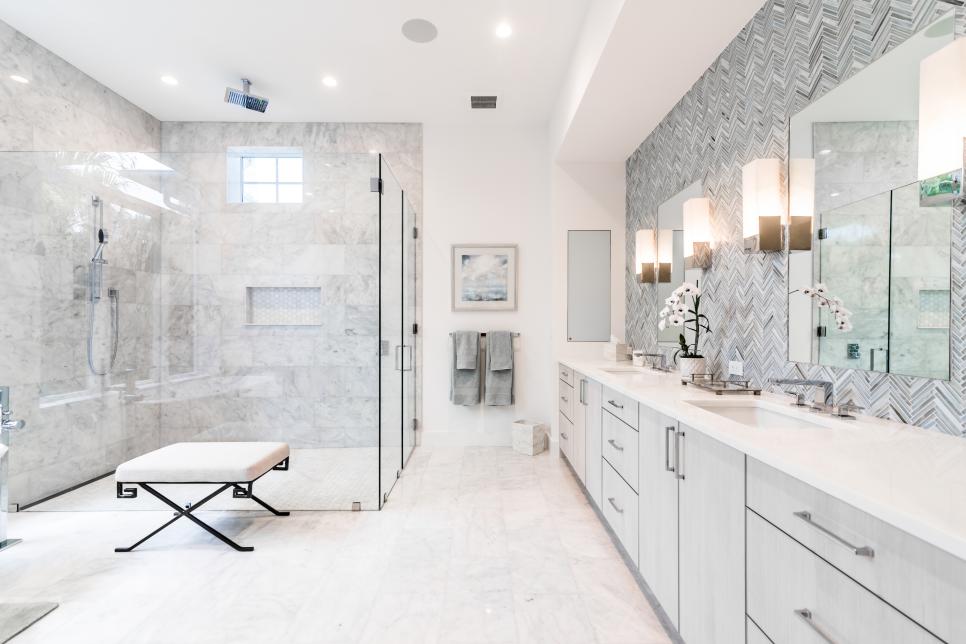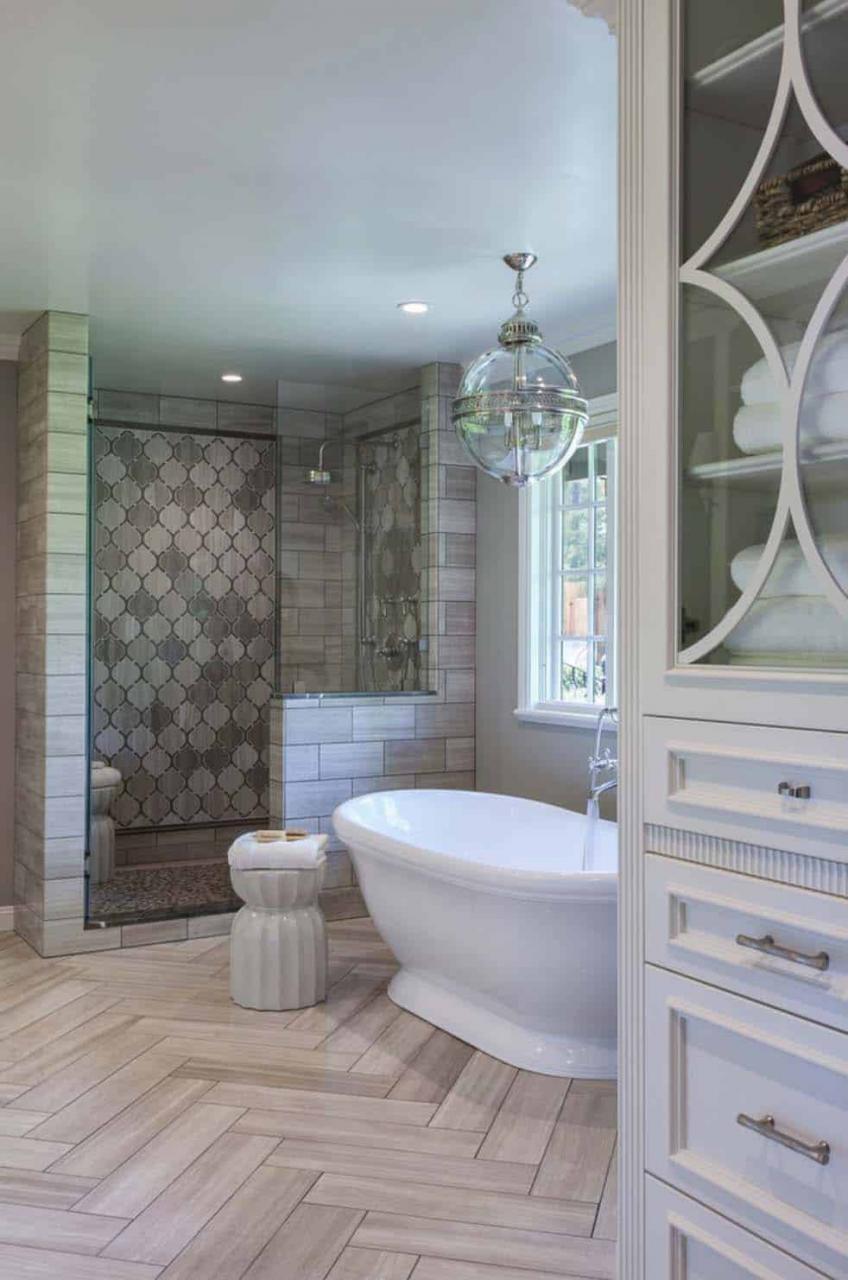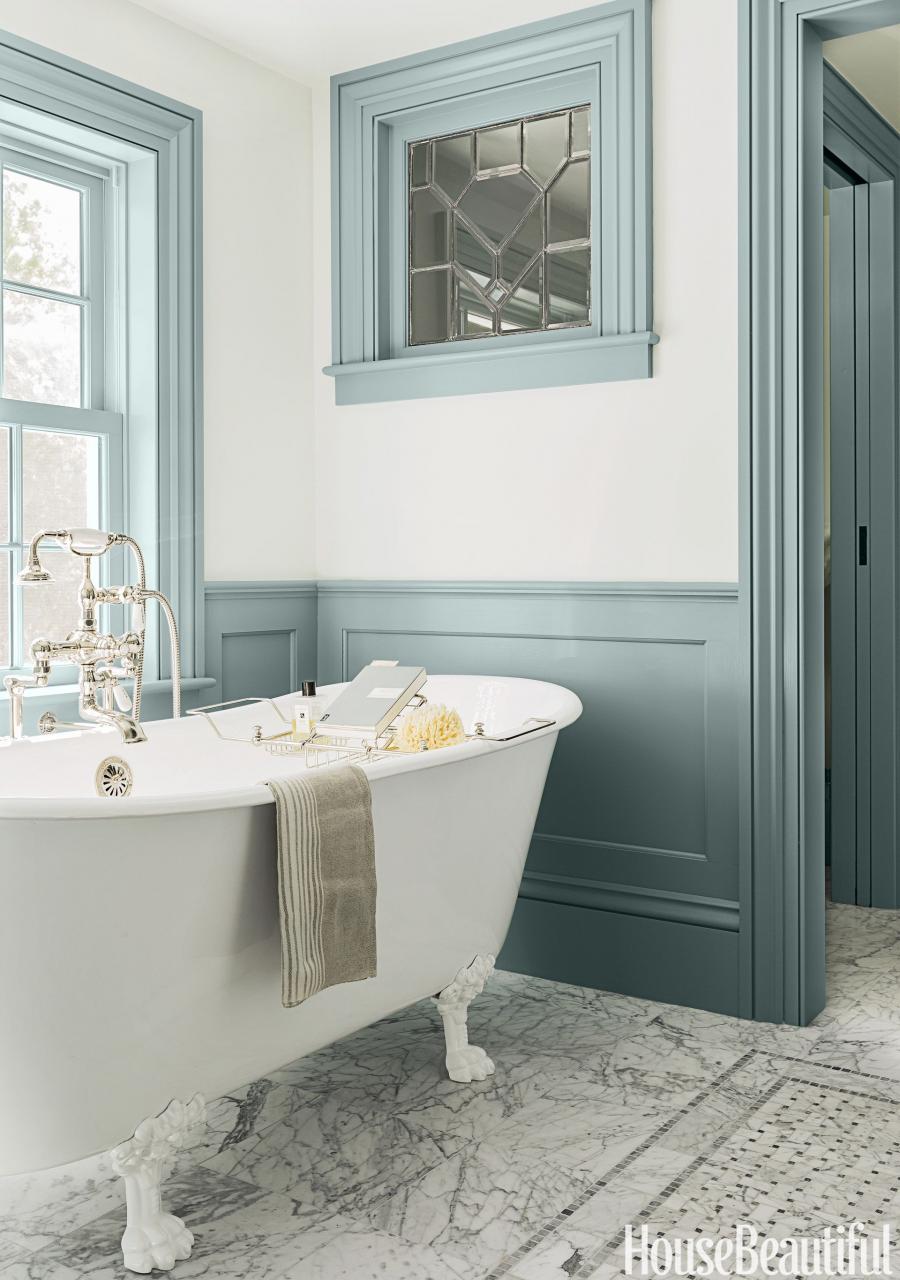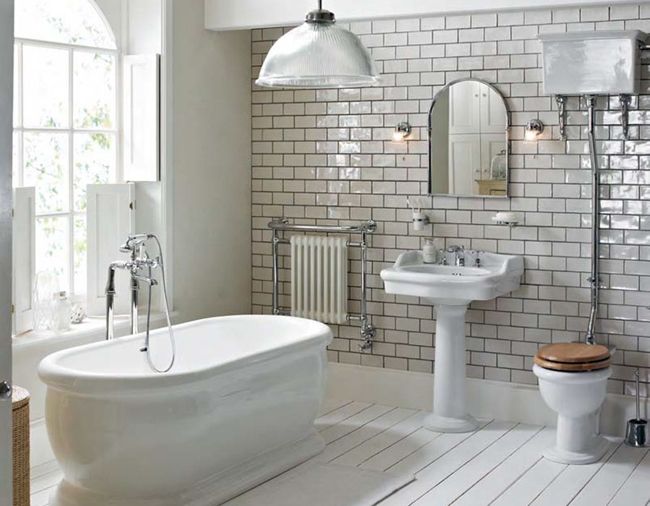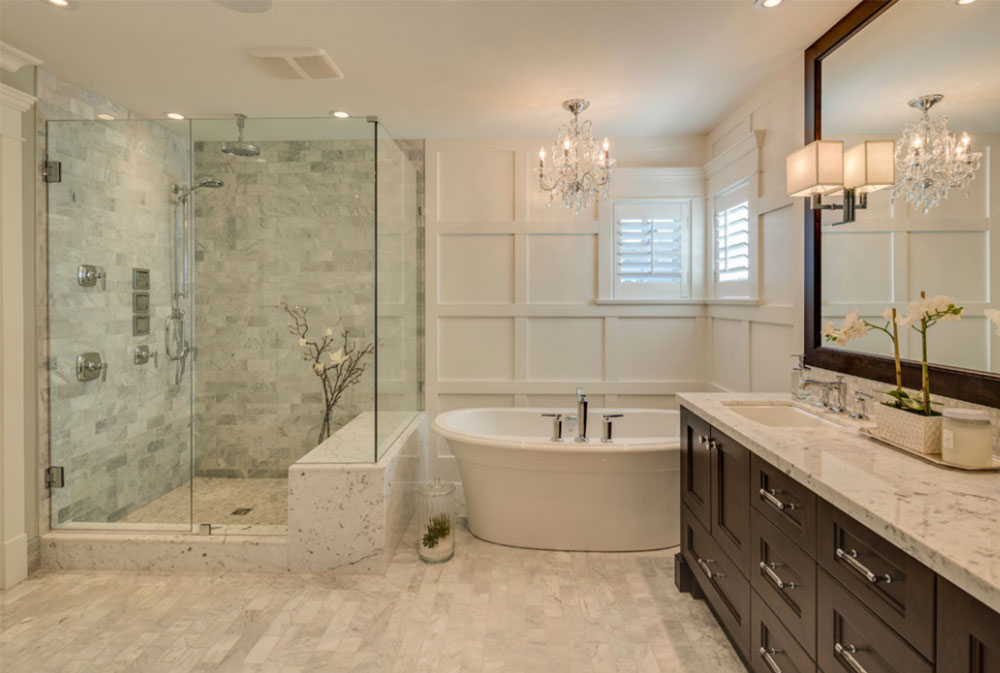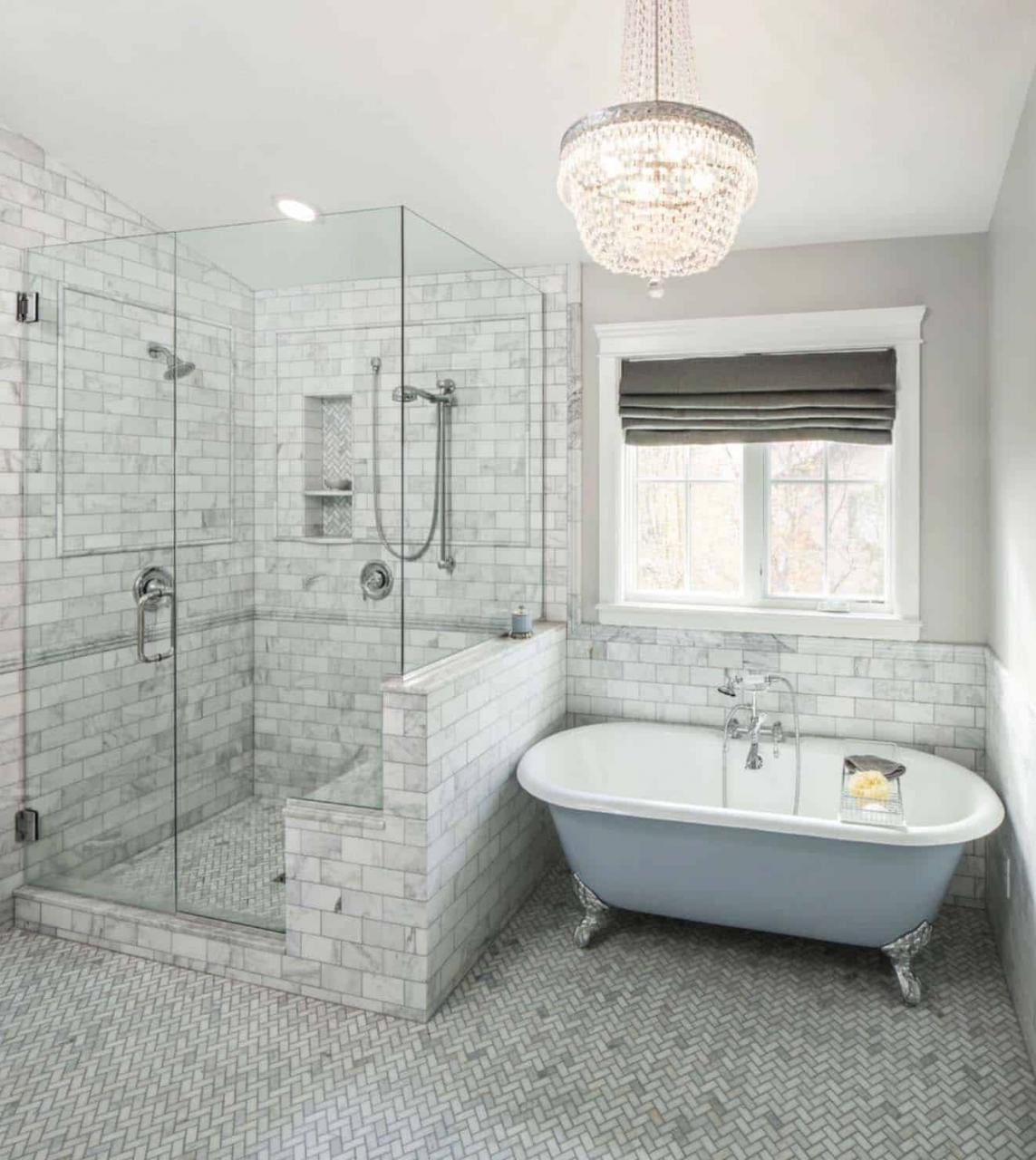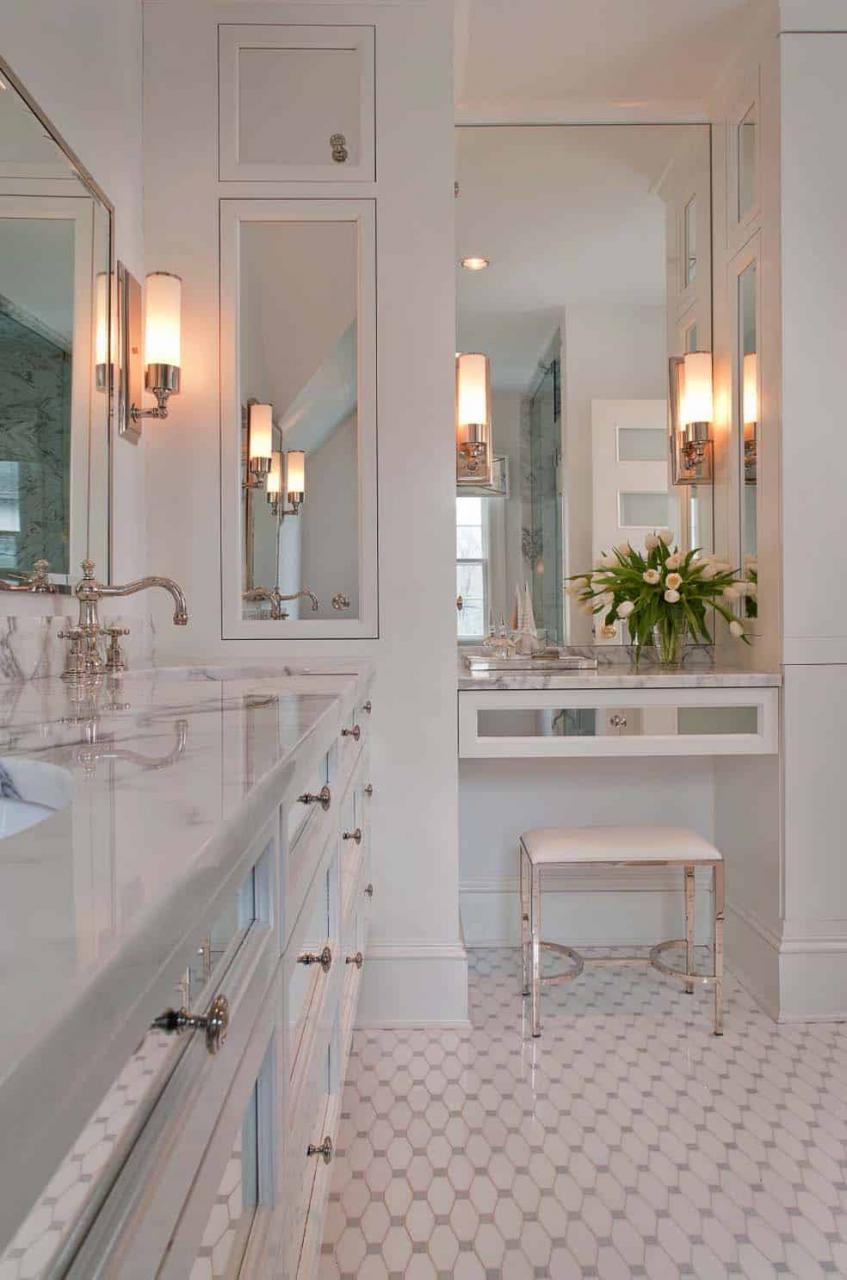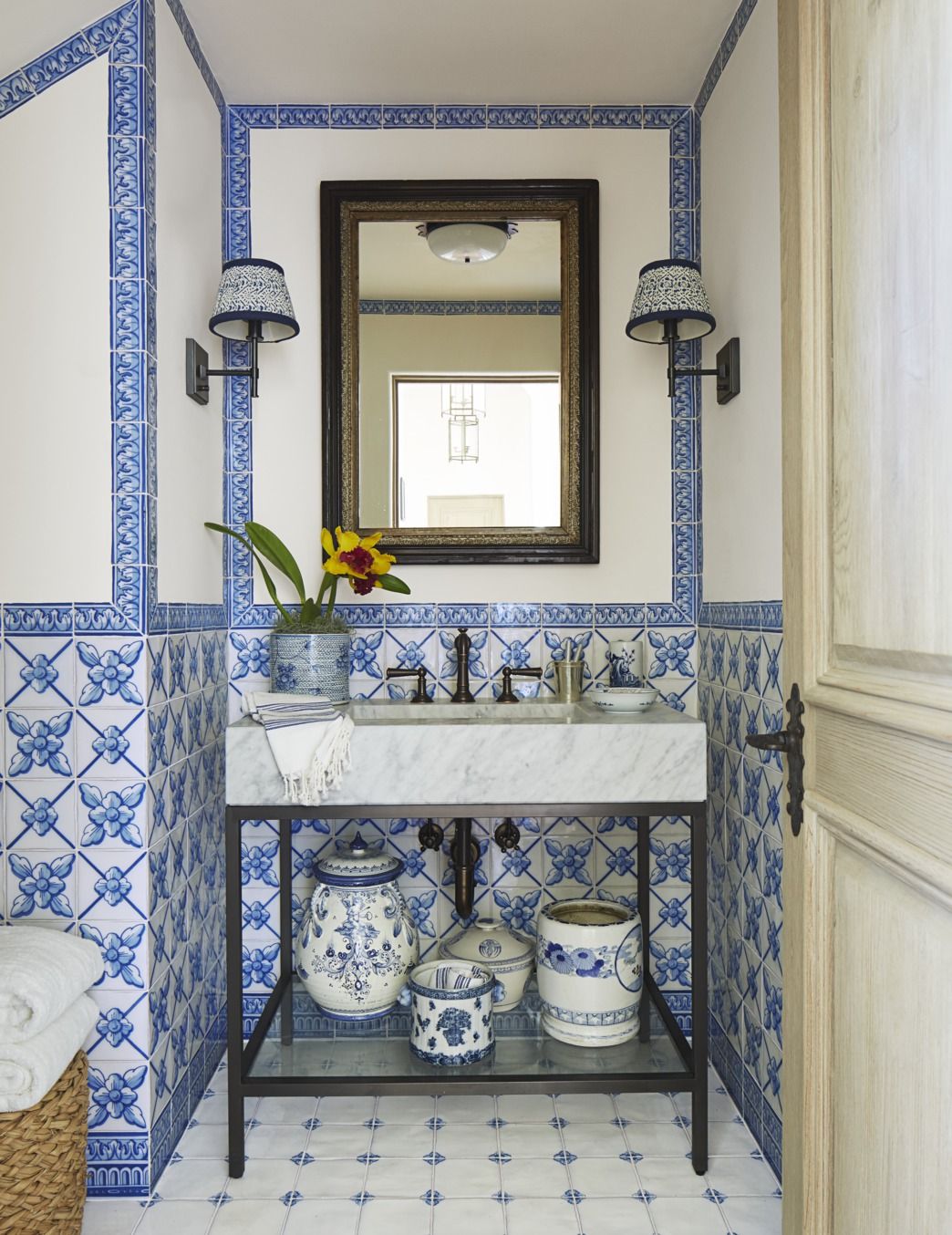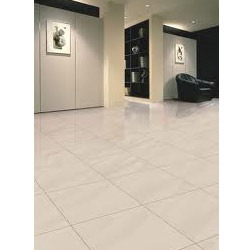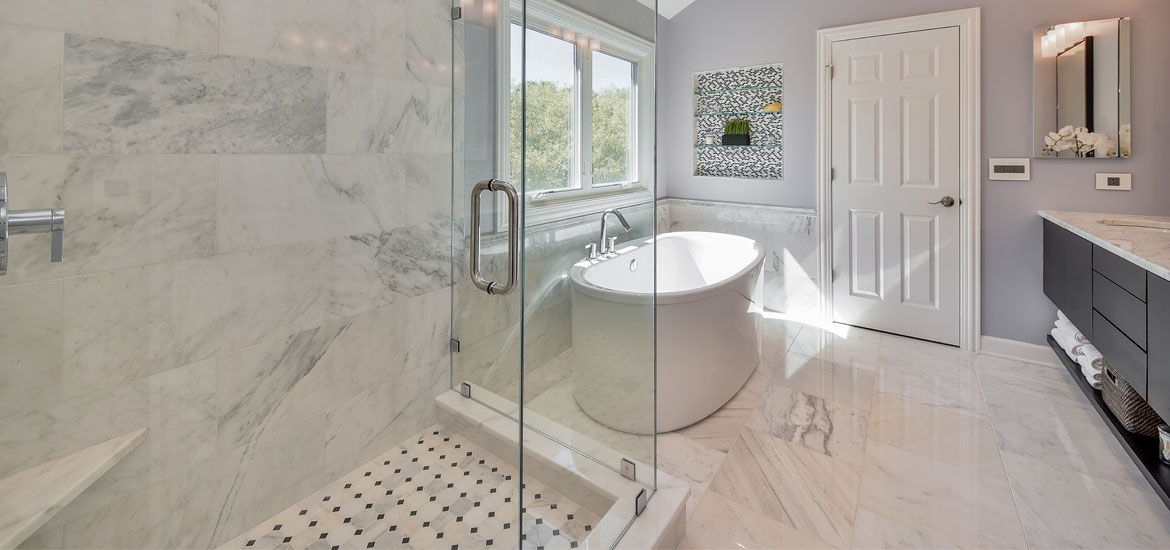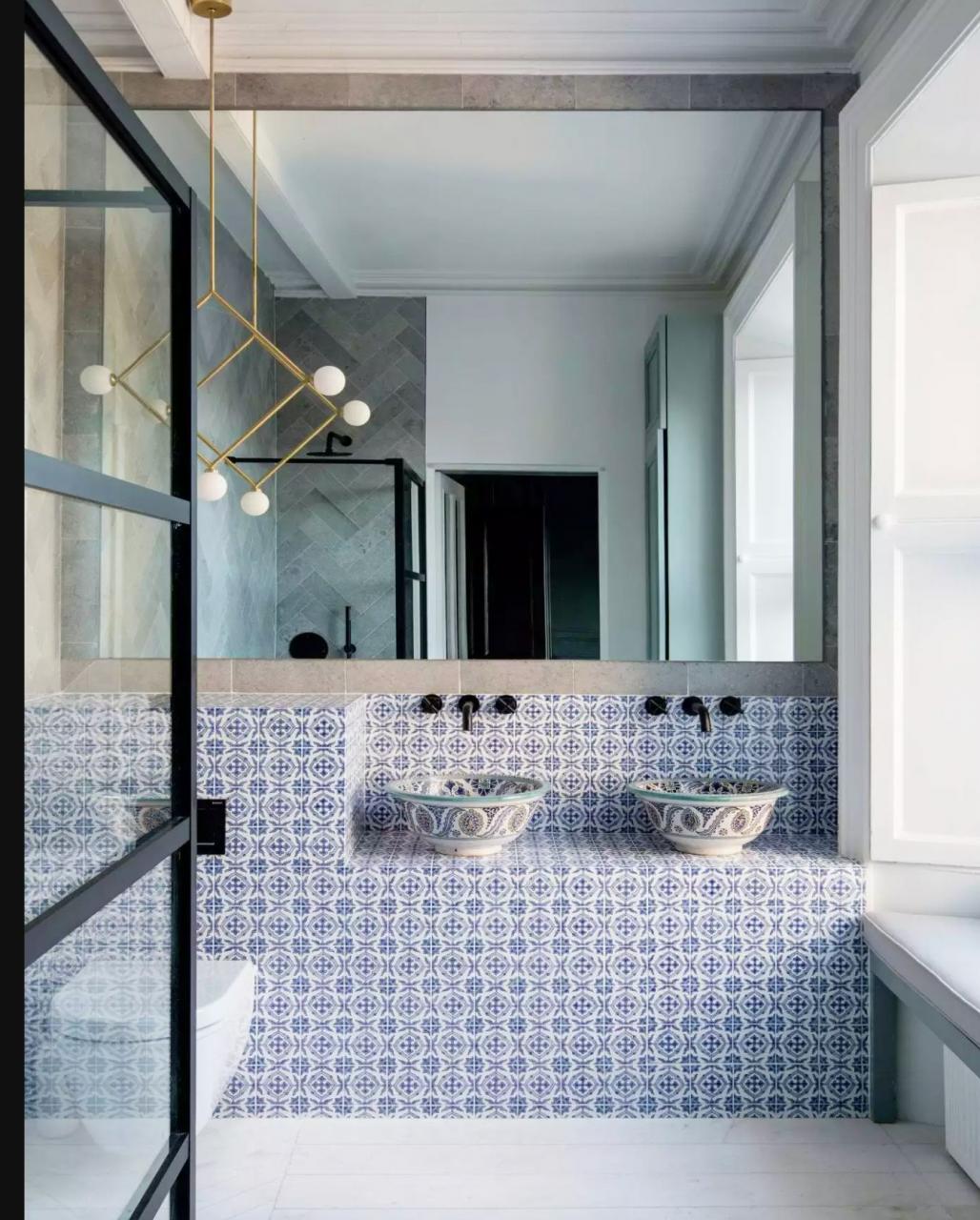Classic Subway Tiles: Timeless Elegance in Bathroom Design
There’s something about subway tiles that never fails to impress me. Whether I’m renovating a bathroom or just daydreaming about a future project, these simple, rectangular tiles evoke a sense of timelessness that few other tiles can. Subway tiles have been around for over a century, and their popularity hasn’t waned one bit. They seem to be making a resurgence, especially in traditional bathroom settings where elegance and simplicity go hand in hand. Here’s why subway tiles should be on your radar when designing a classic bathroom:
- A Versatile Choice for Any Bathroom Size One of the biggest advantages of subway tiles is their versatility. I’ve seen them work beautifully in both small, compact bathrooms and sprawling, luxurious spaces. Their uniform size creates an illusion of space, making a tiny bathroom feel more expansive. On the other hand, in a larger bathroom, subway tiles can be used to anchor a room, creating a cohesive and streamlined look that prevents the space from feeling too cavernous.
- A Wide Range of Color Options While the traditional subway tile is white, I’ve found that they come in a variety of colors that can suit any style. From soft grays to bold blacks, subway tiles offer the flexibility to play with color while still maintaining a classic vibe. I love how white subway tiles paired with darker grout can create an elegant contrast, adding depth and texture to the bathroom. Alternatively, light-colored grout gives a more seamless and airy feel.
- Timeless Appeal with Modern Flexibility Subway tiles have stood the test of time for a reason: their design is simple but sophisticated. They are a blank canvas that allows you to express your personality. Whether you prefer a traditional or contemporary aesthetic, subway tiles can be styled to match. You can create different visual effects by adjusting the grout color, choosing a glossy or matte finish, or even opting for beveled edges for extra dimension.
- Easy Maintenance and Durability One of the reasons I frequently recommend subway tiles to others is their ease of maintenance. They’re incredibly durable and resist water, making them perfect for bathroom settings where moisture is always present. A simple wipe-down with a damp cloth usually does the trick, and their smooth surface means that grime and dirt don’t settle as easily as they might on more textured tiles.
- Endless Patterns to Explore At first glance, subway tiles may seem like they offer limited design options due to their uniform size and shape. However, once you start exploring the different patterns you can create, you’ll see the possibilities are virtually endless. From the classic brick pattern to herringbone, stacked, or vertical layouts, there’s always room to play around and make the design your own. It’s a small change that can make a big impact.
- Affordable Yet High-End Look Subway tiles are known for being affordable, which is a huge plus when working within a budget. Despite their low cost, they never look cheap. I find that they can add a high-end, polished feel to any bathroom. Their classic, timeless appeal ensures that your bathroom will look stylish for years to come, without the need for costly updates.
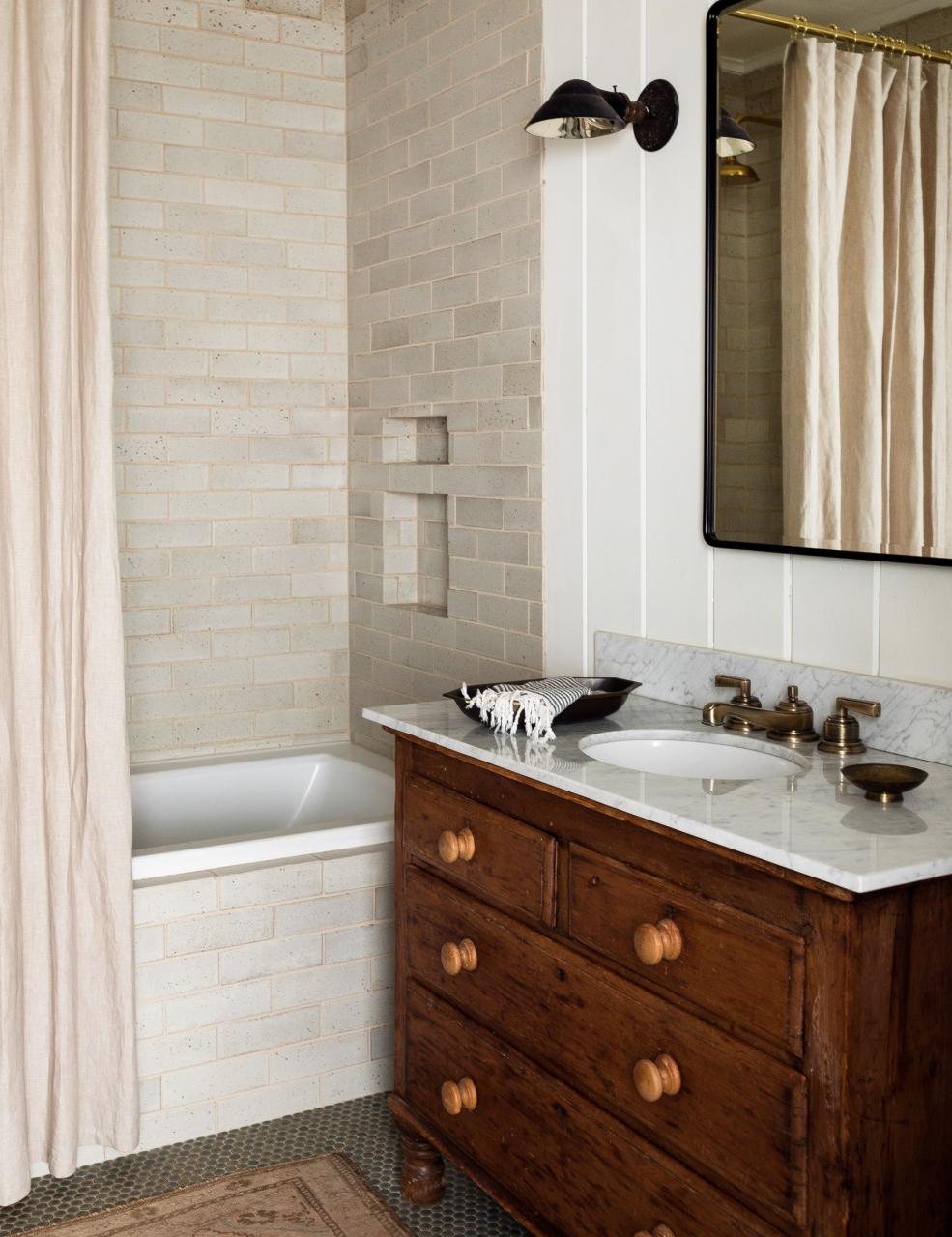
Mosaic Tiles: Adding Texture and Intricacy to Traditional Spaces
Whenever I think of creating a unique and artistic bathroom design, mosaic tiles come to mind. Their intricate patterns and textured surfaces can turn an ordinary bathroom into a work of art. What I love most about mosaic tiles is their versatility—whether you’re looking for something subtle or a bold focal point, they’ve got you covered. Mosaic tiles have a way of infusing traditional bathroom designs with personality, and here’s how they can make your bathroom stand out:
An Artful Addition to Any Bathroom Mosaic tiles are more than just a practical choice for a bathroom—they’re a form of self-expression. With countless patterns, shapes, and colors to choose from, these tiles let you create a bathroom that truly reflects your style. Whether you opt for geometric patterns, floral designs, or simple textured surfaces, mosaic tiles offer an endless array of artistic possibilities.
Adding Depth and Texture to Walls and Floors One thing I’ve always admired about mosaic tiles is the way they can add texture to a space. While traditional flat tiles are great for creating a sleek and polished look, mosaics bring depth and dimension. I’ve seen bathrooms where mosaic tiles are used as accent walls or shower floors, and they always make the room feel more dynamic and visually interesting.
Perfect for Creating Accent Features If you want to make a statement without overwhelming the entire bathroom, mosaic tiles are perfect for accent features. I’ve used them in everything from shower niches to backsplashes, and they always provide a subtle yet striking contrast to the rest of the bathroom. A small strip of mosaic tiles running along the wall or around the mirror can elevate the whole look of the space.
Durability and Longevity Despite their intricate appearance, mosaic tiles are known for being durable. Made from materials like glass, ceramic, or natural stone, they hold up well to the moisture and wear that bathrooms typically endure. This makes them an excellent long-term investment, especially in high-traffic bathrooms where you want both beauty and resilience.
Available in a Variety of Materials Another reason I’m drawn to mosaic tiles is their variety of materials. Whether you’re into the sleek, modern look of glass, the earthy feel of stone, or the timeless appeal of ceramic, there’s a mosaic tile for you. Each material brings its own texture and finish, allowing you to experiment with different aesthetics until you find the one that speaks to you.
Great for Small Spaces I’ve found that mosaic tiles can work wonders in small bathrooms. Their intricate designs can make compact spaces feel more visually engaging. When used thoughtfully, these tiles can break up the monotony of a small bathroom without making it feel cluttered. The key is to balance mosaic tiles with larger, more neutral tiles to create a cohesive design.
Checkerboard Tiles: A Nostalgic Touch to Bathroom Floors
Checkerboard tiles are a blast from the past, but they never seem to go out of style. When I want to inject a sense of nostalgia into a bathroom, checkerboard tiles are my go-to choice. They offer a unique balance of boldness and tradition, creating a bathroom floor that feels timeless yet distinct. Whether in black and white or other color combinations, checkerboard tiles bring a playful yet classic vibe to traditional bathroom designs. Here’s why I love them:
A Classic Pattern with Modern Appeal Checkerboard tiles have been around for centuries, but they still feel relevant today. I think part of their charm lies in their ability to adapt to different styles. While they’re often associated with retro or vintage aesthetics, I’ve seen them used in contemporary bathrooms to great effect. The key is to pair them with modern fixtures or minimalistic design elements for a fresh take on this old-school pattern.
A Bold Floor Design That Steals the Show One of the things I appreciate most about checkerboard tiles is their bold visual impact. There’s no denying that a black-and-white checkerboard floor demands attention. But even in softer shades, this pattern adds a sense of dynamism to the bathroom floor. It’s perfect if you want to create a focal point without overloading the walls with patterns or textures.
Versatile Color Combinations While the classic black-and-white checkerboard pattern is iconic, I love experimenting with different color combinations. Soft pastels can give the bathroom a more delicate, vintage feel, while darker shades like navy and gray can create a moodier, more dramatic effect. No matter what colors you choose, the checkerboard pattern remains a timeless option that enhances traditional design.
Mixing Patterns and Styles What makes checkerboard tiles fun is their ability to mix with other patterns. I’ve seen beautiful bathrooms where the checkerboard floor is complemented by subway tile walls, floral wallpaper, or even intricate mosaic tile backsplashes. The trick is to balance the boldness of the floor with simpler, more understated elements in the rest of the space.
Perfect for Larger Bathrooms If you have a larger bathroom, checkerboard tiles can help break up the space and add visual interest. I’ve worked on bathrooms where the large expanse of floor felt empty, but adding a checkerboard pattern brought the room to life. It gives a sense of structure to the floor, drawing the eye and creating a sense of movement throughout the space.
Easy to Maintain Despite their intricate appearance, checkerboard tiles are relatively easy to maintain. I usually recommend ceramic or porcelain tiles for their durability and ease of cleaning. With a checkerboard pattern, the alternating tiles can help hide dirt and grime, which is always a bonus in high-traffic bathrooms. Plus, they’re resistant to moisture and wear, making them a long-lasting choice for bathroom floors.
Ceramic Tiles: Durability and Style in Traditional Bathrooms
Whenever I’m working on a bathroom renovation with a traditional twist, ceramic tiles always find a place in my designs. There’s something so reliable and versatile about them. Whether it’s for the walls, floors, or even shower enclosures, ceramic tiles strike the perfect balance between durability and style. They’ve been a staple in bathrooms for decades, and it’s easy to see why. Here’s why I often recommend ceramic tiles for traditional bathroom spaces:
Unmatched Durability for Daily Use One of the primary reasons I lean toward ceramic tiles is their impressive durability. Bathrooms endure a lot of wear and tear—moisture, constant foot traffic, and the occasional spill—and ceramic tiles handle it all with grace. Their hard surface resists cracks and chips, making them an ideal long-term investment for a high-traffic bathroom. I’ve installed ceramic tiles in bathrooms that still look pristine years later.
Water Resistance at Its Best Bathrooms are wet environments, and choosing the right tile material is crucial to avoid long-term issues. Ceramic tiles are naturally water-resistant, which is a huge plus in areas like the shower or around the bathtub. They’re easy to clean and don’t absorb moisture, reducing the risk of mold or mildew growth. It’s one of those low-maintenance materials that allow you to enjoy the beauty of your bathroom without worrying about constant upkeep.
A Range of Colors and Finishes What I love about ceramic tiles is that they come in a wide variety of colors, finishes, and textures. This makes it easy to find a style that fits the traditional bathroom aesthetic. Glossy finishes add a touch of elegance, while matte options offer a more subdued, classic look. Whether you want neutral tones to keep things understated or bold colors to create a focal point, ceramic tiles provide endless possibilities.
Cost-Effective Without Sacrificing Style Budget is always a factor when renovating a bathroom, and ceramic tiles are one of the most cost-effective options available. Despite their affordability, they never look cheap. In fact, I find that ceramic tiles can elevate a bathroom’s design without breaking the bank. For those looking to achieve a traditional look on a budget, ceramic tiles are a go-to solution that delivers both style and substance.
Versatile for Floors, Walls, and Backsplashes Another reason I often turn to ceramic tiles is their versatility. They can be used virtually anywhere in the bathroom—from the floor to the walls and even in decorative backsplashes. I’ve worked on projects where ceramic tiles were used in a combination of places to create a cohesive look, tying the entire bathroom together. Plus, their ability to mimic the appearance of natural stone or wood allows for a range of design options.
Low Maintenance and Easy to Clean I know that maintaining a bathroom can be a hassle, which is why I love how easy ceramic tiles are to clean. Their smooth surface allows dirt and grime to be wiped away with minimal effort, making them perfect for busy households. With just regular cleaning, ceramic tiles retain their beauty and functionality for years, keeping your bathroom looking fresh and elegant.
Victorian-Inspired Tiles: Ornate Designs for a Classic Look
Whenever I’m working on a traditional bathroom, incorporating Victorian-inspired tiles is my go-to for adding a touch of timeless elegance. These tiles often feature intricate designs, rich colors, and delicate patterns that create a sense of grandeur. The Victorian era was all about ornamentation, and these tiles reflect that ethos beautifully. For those looking to add an element of historic charm to their bathroom, here’s why Victorian-inspired tiles are a perfect fit:
A Nod to Timeless Elegance Victorian-inspired tiles are a reminder of the opulence and sophistication of a bygone era. I love how they can instantly transport a bathroom back in time, creating a space that feels both classic and refined. These tiles often feature intricate floral motifs, geometric patterns, or even elaborate borders that make the bathroom feel luxurious. It’s the kind of design that never goes out of style, no matter how trends shift.
Rich Color Palettes for a Warm Ambiance One of the things I appreciate most about Victorian tiles is their rich color palette. Deep blues, greens, reds, and golds dominate these designs, creating a warm and inviting atmosphere in the bathroom. When paired with softer hues or neutral tones, the bold colors of Victorian tiles can create a stunning contrast that brings the space to life. I love how these colors lend a sense of depth and character to the bathroom.
Perfect for Adding Intricate Details Victorian-inspired tiles are known for their intricate detailing, which can add a touch of sophistication to any bathroom. Whether used in small doses or as a feature wall, these tiles offer a level of intricacy that’s hard to replicate with modern designs. I’ve found that even a small border of Victorian tiles around a bathtub or mirror can elevate the entire room, making it feel more luxurious and thoughtfully designed.
Great for Mixing with Modern Elements While Victorian tiles are steeped in tradition, they also work surprisingly well in more modern spaces. I’ve seen them combined with sleek, contemporary fixtures to create a striking juxtaposition. The key is to balance the ornate details of the tiles with minimalist elements, ensuring the bathroom doesn’t feel too cluttered. It’s a great way to mix old-world charm with modern functionality.
Tile Shapes That Add Character Victorian tiles come in various shapes that can add character to the bathroom. Hexagons, octagons, and even elongated rectangles can create unique patterns that break away from the typical square or rectangular tiles. I love how these shapes can be used to create beautiful, repeating patterns across the floor or walls, giving the bathroom a distinct personality.
Long-Lasting Beauty and Durability Despite their ornate appearance, Victorian-inspired tiles are highly durable. Made from materials like ceramic or porcelain, they stand up well to daily wear and tear, especially in moisture-rich environments like bathrooms. I often recommend them for high-traffic areas where you want both beauty and longevity. With proper care, these tiles can retain their intricate designs and rich colors for years.
Neutral Color Palette: Enhancing Traditional Tile Appeal
Neutral tones have always been a favorite of mine when it comes to traditional bathroom designs. They offer a calming, understated elegance that allows other elements in the room to shine. When it comes to tiles, a neutral palette—think whites, creams, soft grays, and beiges—can create a timeless foundation for the bathroom, making it feel spacious, serene, and stylish. Here’s why I often gravitate toward neutral-colored tiles in traditional bathroom settings:
Creating a Calm and Inviting Atmosphere One of the primary reasons I love using neutral tiles is the calming atmosphere they create. Bathrooms should feel like a place of retreat, and neutral tones help achieve that sense of serenity. I’ve found that light, airy colors like white and cream open up the space, making it feel larger and more inviting. It’s the perfect backdrop for a traditional bathroom that emphasizes relaxation and comfort.
Allowing Fixtures to Take Center Stage Neutral tiles offer the perfect canvas for showcasing other elements in the bathroom. Whether it’s a clawfoot bathtub, a vintage vanity, or ornate brass fixtures, a neutral backdrop lets these features shine without overwhelming the space. I’ve worked on several projects where the tiles played a supporting role, allowing beautiful fixtures to become the focal point.
Versatility with Other Design Elements Neutral tiles are incredibly versatile, which is why I use them so often. They pair well with virtually any color scheme or style, making it easy to incorporate other design elements like patterned wallpaper, colorful rugs, or statement mirrors. I’ve even seen neutral tiles used with bold accent colors in bathrooms to create a striking yet balanced look.
Timeless Appeal that Never Goes Out of Style I always advise homeowners to think long-term when designing their bathroom, and neutral tiles offer a timeless solution. They never go out of style, which means you won’t need to worry about updating your bathroom as trends change. Whether you’re planning to sell your home or simply want a bathroom that feels classic and elegant for years to come, neutral tiles are a safe bet.
Great for Small Bathrooms Neutral-colored tiles can make even the smallest bathrooms feel more spacious. I’ve used them in countless small bathrooms, where their light-reflecting properties create the illusion of a larger, more open space. If you’re dealing with limited square footage, opting for neutral tiles can help you maximize the sense of space while still keeping things stylish.
Easy to Coordinate with Other Materials When it comes to mixing materials in the bathroom—whether it’s wood, metal, or stone—neutral tiles provide the perfect foundation. I’ve paired them with everything from marble countertops to rustic wood vanities, and they always seem to tie the room together effortlessly. Their understated elegance allows for a harmonious blend of textures and materials without clashing.
Patterned Floor Tiles: Blending Tradition with Visual Interest
If there’s one design element that can completely transform a traditional bathroom, it’s patterned floor tiles. I’m a huge fan of how these tiles bring visual interest to the floor while maintaining a classic feel. They offer an opportunity to introduce creativity and personality without straying from traditional aesthetics. Whether you go for subtle patterns or bold designs, patterned tiles can give your bathroom a unique look that stands out. Here’s why I love using them:
Adding Personality and Flair Patterned floor tiles is a fantastic way to infuse personality into your bathroom. I’ve seen bathrooms where a single patterned floor immediately becomes the focal point of the space, turning a simple design into something special. From floral motifs to geometric shapes, patterned tiles allow you to express your style while maintaining a classic, traditional ambiance.
Balancing Boldness with Tradition While patterned tiles can make a bold statement, they don’t have to overwhelm the space. I love how these tiles can be used to create balance—adding visual interest to the floor while keeping the walls and fixtures more subdued. In traditional bathrooms, this creates a harmonious look that feels both timeless and modern. The key is choosing patterns that complement rather than compete with other design elements.
Bringing Color and Contrast Patterned tiles often come in a variety of colors, allowing you to introduce contrast into your bathroom design. I’ve used tiles with soft, muted patterns in neutral bathrooms to add a subtle pop of color, while in other cases, I’ve chosen bolder patterns for a more dramatic effect. Either way, the contrast adds depth and dimension to the space, making it feel more dynamic.
Perfect for Both Large and Small Bathrooms I’ve used patterned tiles in both large and small bathrooms with great success. In larger bathrooms, they can help break up the space, adding visual interest to areas that might otherwise feel too open. In smaller bathrooms, they can create the illusion of more space by drawing the eye to the floor and adding a sense of movement. It’s a versatile design element that works in any bathroom size.
Mixing with Solid Tiles for Balance One technique I often use when working with patterned floor tiles is mixing them with solid tiles to create balance. For example, I’ll use patterned tiles on the floor while keeping the walls simple with solid-colored ceramic tiles. This creates a sense of harmony and prevents the bathroom from feeling too busy. It’s all about finding the right balance between pattern and simplicity.
Durability Meets Design Patterned tiles are usually made from durable materials like ceramic or porcelain, which means they stand up well to the wear and tear of a bathroom environment. Despite their decorative appeal, these tiles are built to last, making them both a stylish and practical choice. I’ve installed patterned floor tiles in bathrooms where they’ve held up beautifully for years, proving that you don’t have to sacrifice durability for design.
Common Mistakes to Avoid
Overloading the Space with Patterns While patterned tiles can add interest to a bathroom, overloading the space with too many patterns can make it feel cluttered and chaotic. To avoid this, balance patterned tiles with solid-colored tiles to create a harmonious design.
Neglecting Grout Color Choosing the wrong grout color can completely alter the look of your tiles. Always consider how the grout will contrast or blend with the tile color to achieve a seamless finish.
Ignoring Tile Size in Small Bathrooms Larger tiles can make small bathrooms feel even smaller. Opt for smaller tiles or mosaic designs to create a sense of space and proportion.
Choosing Tiles that Don’t Complement Fixtures It’s easy to focus solely on the tiles, but they should complement other bathroom elements like the sink, tub, and hardware. Make sure the tiles enhance the overall look of the bathroom, rather than competing with these fixtures.
Overlooking Practicality Some traditional tiles may look beautiful but require more maintenance or aren’t suitable for high-moisture environments. Always balance style with functionality to ensure the tiles will stand the test of time.
Forgetting to Account for Slippage Bathroom floors can become slippery, especially when wet. Make sure to choose tiles with a slip-resistant finish to prevent accidents.
What are the best tiles for a traditional bathroom design? The best tiles for a traditional bathroom design are classic options like subway tiles, Victorian-inspired tiles, and mosaic tiles. These choices provide a timeless aesthetic and are known for their durability and elegance. Neutral ceramic or porcelain tiles also work well in traditional settings.
How do I maintain traditional bathroom tiles? Maintenance depends on the type of tile. Generally, ceramic and porcelain tiles are easy to clean with regular wiping and mopping. Victorian and patterned tiles may require more attention to detail when cleaning to preserve their intricate designs. Grout should also be sealed periodically to prevent staining.
Can I mix modern fixtures with traditional tiles? Yes, mixing modern fixtures with traditional tiles can create a balanced and unique look. The key is to ensure that the tiles’ patterns and colors complement the sleek, contemporary lines of modern fixtures, creating a cohesive design that blends old-world charm with modern functionality.
Are patterned tiles too bold for a small bathroom? Patterned tiles can work beautifully in small bathrooms if used thoughtfully. Opt for subtle patterns or limit their use to one area, like the floor or an accent wall. This creates a focal point without overwhelming the space, making it feel stylish rather than cramped.
What is the best grout color for traditional tiles? The best grout color for traditional tiles depends on the desired look. For a seamless appearance, choose a grout color that closely matches the tile. For a more defined look that highlights the tile pattern, use a contrasting grout color. White grout is popular for classic subway tiles, while darker grout can add definition to mosaic designs.
Can traditional tiles work in a contemporary bathroom? Traditional tiles can be incorporated into contemporary bathrooms with the right design approach. Using neutral-colored traditional tiles, such as white subway tiles or soft mosaic patterns, in combination with modern fixtures can create a stunning contrast that brings out the best of both styles.
Related Posts:
